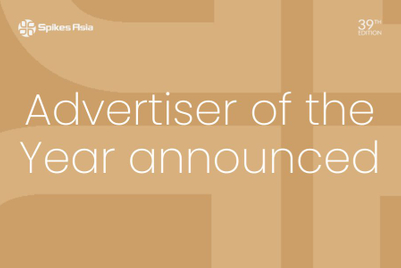
Even in the very best times, it’s challenging to balance bold creativity with sustained business impact.
But that’s exactly what’s required to drive true marketing effectiveness.
If creativity isn’t effective, it’s a short-term blip on the brand radar. If effective work isn’t creative, it’s a short-term solve for momentary, incremental gain. When creativity is effective and effective work is creative, it can make a monumental impact on businesses, people and even the world.
A corporate culture that embraces creative effectiveness must be developed with intention. It requires using creativity to solve thorny client problems, and embracing that creativity and effectiveness can’t exist without each other.
Here are some lessons we’ve learned along the way.
1. Marrying creativity and effectiveness is everyone’s job
For creativity and effectiveness to thrive together, agencies and clients must share and belief that the two are irrefutably linked.
We’ve built a culture of creative effectiveness throughout the organization, from the processes we use to create work to setting up teams in an integrated way. Our mission isn’t just philosophical – it’s manifested in practical daily actions that improve the way we work.
Arm people with everything they need to drive this culture and practice. Finding intentional ways to incorporate effectiveness into every step of the creative process only strengthens the work.
2. Treat effectiveness as a human concept
Effectiveness used to mean a Nielsen rating or cost per click. But that’s no longer enough.
Truly effective work resonates with people and inspires action. While brands have long valued short-term efficiency over long-term effectiveness, many are realizing that the most effective work connects with people at a human level. A brand’s meaning and role in society can be effective in how it informs every aspect of the business.
3. Effectiveness can come at different altitudes
Business results, brand impact and cultural impact can all be elements of effective work. To accomplish all three, brands should create and manifest a meaningful role. Move away from novelty one-offs and deliver a consistent, strategic system of work imbues meaning in everything the brand does do. This will drive efficiency as well as effectiveness.
Reaching different altitudes of effectiveness requires close partnership with clients. Our clients in Latin America, for example, value effectiveness so much that they even paid for entries into last year’s Effie awards.
4. Effectiveness requires partnership
It also requires the shared audacious goal to impact the world, and the command of a whole lot of data. To work in a truly integrated way with clients, treat every brief as an opportunity to make massive impact together.
Start with the data, but don’t stop there. Set the context for data, interpret it, and hunt for insights that can spark creativity. Great creative work doesn’t just relay information — it challenges us to see something in a new way, through the filter of a brand.
5. Effectiveness isn’t an award season
It’s a pervasive culture that drives consistent great work through process and purpose. There’s no effectiveness button to push or algorithm to crack. It takes the rigor to dig deep and find something new, and the courage to take creative leaps that unlock new opportunities.
Creating a cult of creative effectiveness isn’t just the strategy department’s job. Everyone should be equally engaged in feeding this culture. Creative effectiveness is our currency in this business, our proof that ideas can directly impact our clients, our society and the world.
But we can only use creativity to solve problems for our clients when we develop the conditions for creative effectiveness to thrive.
Suzanne Powers is global president and chief strategy officer at McCann Worldgroup.



.jpg&h=334&w=500&q=100&v=20250320&c=1)


.jpg&h=334&w=500&q=100&v=20250320&c=1)
.jpg&h=334&w=500&q=100&v=20250320&c=1)
.jpeg&h=334&w=500&q=100&v=20250320&c=1)


.jpg&h=334&w=500&q=100&v=20250320&c=1)


.jpg&h=268&w=401&q=100&v=20250320&c=1)


.jpg&h=268&w=401&q=100&v=20250320&c=1)
.jpg&h=268&w=401&q=100&v=20250320&c=1)

.jpg&h=268&w=401&q=100&v=20250320&c=1)